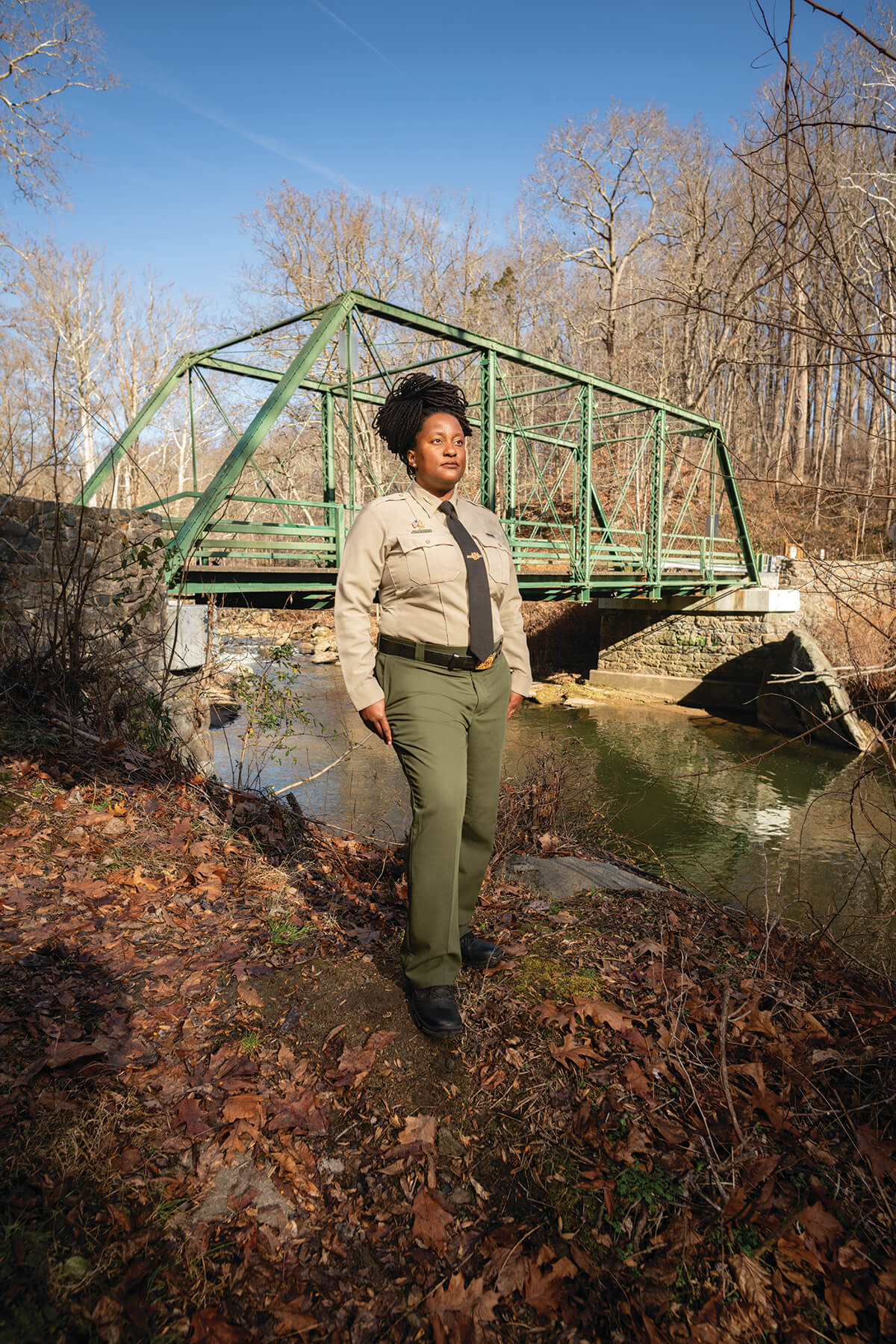GameChangers
Angela Crenshaw Has Big Ideas to Make Our State Parks More Accessible and Inclusive
With the Great Maryland Outdoors Act ushering in new parks, staff, and funding, plus record-high visitation still lingering from the pandemic, the new Maryland Park Service director arrives at a pivotal time.

From a young age, Angela Crenshaw heard the call of the wild. Growing up first in West Virginia, then Baltimore County, the now-41-year-old former Girl Scout fell in love with nature through the trees in her backyard, eventually earning a degree in environmental policy and landing a job with the Maryland Department of Natural Resources.
Working her way up as a park ranger, she spent time in several of the state’s 68 parks, forests, and wildlife areas, such as Elk Neck on the Eastern Shore, Susquehanna north of Baltimore, and the county’s own Gunpowder Falls. By all accounts, this career has been her calling, and after 15 years with the service, she became Park Service’s interim director last April, before being hired full time in the fall. And with the Great Maryland Outdoors Act ushering in new parks, staff, and funding, plus record-high visitation still lingering from the pandemic, she arrives at a pivotal time—with lots of her own big ideas to boot.
Growing up around Baltimore, how did you connect with nature?
Nature is always around, if you look for it. When I was about four, we lived off Loch Raven Boulevard in a built-up area, but we still had trees. We moved a few years later, close to Herring Run Park, so I spent a lot of time there as a kid, running around, splashing in the water, collecting crayfish and tadpoles, looking for salamanders. Then we moved a little further north, near the Big Gunpowder Falls…I’ve just always felt at home in the woods.
You’ve helped bring the likes of Juneteenth and Pride celebrations to Maryland’s state parks. How do you hope to continue these efforts toward more inclusivity into your new role?
My entire goal is to bring the Park Service forward. Sometimes public lands aren’t accessible to everyone. You definitely need a car to get to most of our state parks—there’s only one you can take the bus to. Camping can get expensive—you need the time off and the gear. And, of course, the history of African Americans in public lands is very negative. In the beginning of national and state parks, people worked hard to keep minorities out. I want to make sure that everyone feels welcome to not just visit, but stay and work here…And that the stories that we tell in our state parks resonate with everybody, too.
For example, the history of Maryland’s Black beaches that have recently come to light.
Lonesome vs. Maxwell is the court case that desegregated all of our public lands, and that started at Sandy Point State Park in Annapolis. What’s currently the East Beach was for Black folks and the South Beach was for white folks….On the way to South Beach is a large plantation house that was owned by Henry Mayer. He enslaved people on that property. And a lot of people visit that park and have no idea. But sharing that history is important work to me.
You also spent years at the Harriet Tubman Underground Railroad National Historic Park on the Eastern Shore.
Living down there changed my life. I felt like I was not only telling Harriet’s story but living it. I would walk in the woods and feel the same things she did. In the wintertime, you could look up and see the stars through the trees. In the summer, it’s atmospheric and full of leaves. I just really felt a connection to her, and to the outdoors, and to her connection to the outdoors. And I loved sharing that. A lot of people are familiar with Tubman but not her knowledge of nature. She was a natural outdoors woman. But she needed to be, for the Underground Railroad. It’s a luxury for me.
What are some of your other priorities this year?
The Great Maryland Outdoors Act is huge and has a lot of parts to it. It creates one new state park right away, which is Freedman State Historical Park [in Montgomery County]. And then by 2025, it creates Port of Deposit State Historical Park up in Cecil County. It requires the Department of Legislative Services to do a comprehensive one-year research project about Maryland State Parks—how we can improve them, how we can make them more accessible.
That’s taking up a lot of my time, because I want to get it right…We’re severely underfunded and severely understaffed, and the plan addresses that, too. We’ll be hiring more people, breaking up some of our complexes, where sometimes one park runs two, three, four, sometimes 10 of our public lands. When 2020 hit with the pandemic, our visitation skyrocketed, and we have to be able to serve all of these people that want to enjoy these places, and safely…The Great Maryland Outdoors Act will allow us to do more than just fix problems. It will help us be able to treat these resources that we’ve taken pledges to protect and love with the honor and the respect that they deserve. I don’t know the last time we had such an influx of cash and interest. So this is a very exciting time to take the reins of the Maryland Park Service.
What are the perks of visiting the parks in the off-season?
With fewer people, more critters come out. When I was taking this photograph in Gunpowder Falls, an eagle flew over, then an immature bald eagle, and then another. And that happens to me a lot in our state parks, when it’s just me and nature. I see foxes. I hear turkeys. It’s very quiet and peaceful.